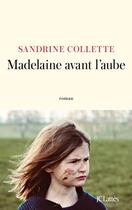Résumé:
FOR children who grew up in France before the Second World War,
memorizing the fables of the 17th century poet Jean de La Fontaine was a ritual as familiar as daily snacks of bread and bitter chocolate, placing bulletins under the tree for Santa's reading, or at the
search for the little white... Voir plus
FOR children who grew up in France before the Second World War,
memorizing the fables of the 17th century poet Jean de La Fontaine was a ritual as familiar as daily snacks of bread and bitter chocolate, placing bulletins under the tree for Santa's reading, or at the
search for the little white china that Jesus buried in our cake
Epiphany on the sixth day of the new year.
Had the praise of a peer or teacher gone to our heads? The fable of the Fox and the Raven is born: the Fox, hungry for the cheese held in the Raven's beak, flatters the bird by trying to prove that its song is as dazzling as its plumage (ramage), and collects the delicious prize when the crow opens its beak to sing.
Do we have too much confidence in appearances, our own and those of others? One of La Fontaine's many antidotes to this weakness is his tale of The Lion and the Gnat: the king of beasts arrogantly declares war on a humble insect, and is quickly defeated and slaughtered by the pernicious stings of the pipsqueak.
Donner votre avis














